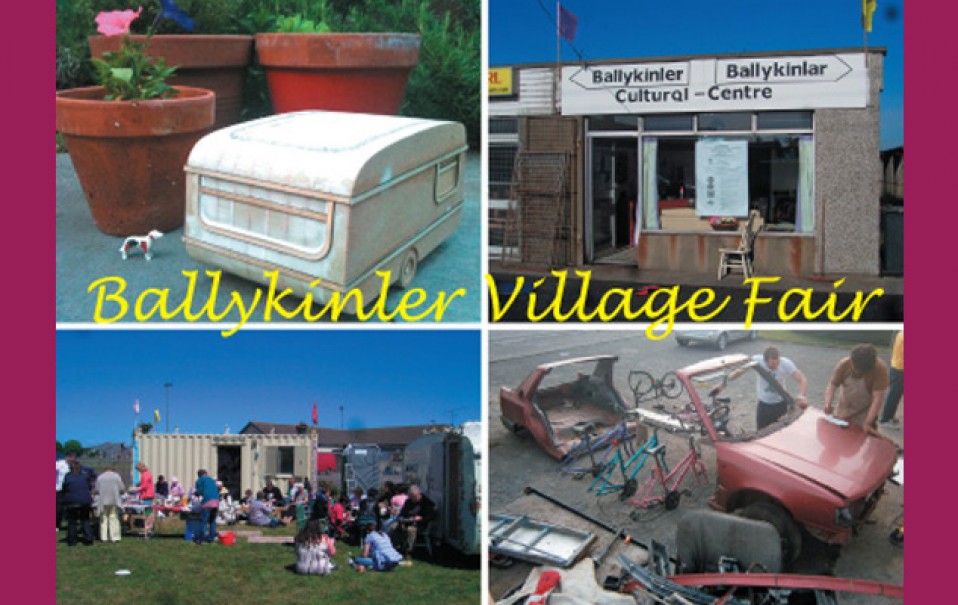
UP- Down. 4 community art workshops + 1 Village Fair
February 2011 - May 2011
UP- Down- 4 community art workshops + 1 Village Fair is initiated by PS² and local artist and activist Anne-Marie Dillon
and takes place between February-May 2011
Participating artists
Phil Hession- Belfast; public works-London; Paddy Bloomer- Belfast; Duncan Ross-Belfast.
Project outline
4 project workshops over an 8 week period open for free to all villagers of Ballykinler//Ballykinlar.
Aims
1. the production of a film and cinema caravan
2. the fabrication of a local souvenir
3. the construction of a scrap metal mobile sculpture- Limousine cycle
4. the publication of a village newspaper and News website
+ a village fair
‘UP- Down’ addresses
- aspects of ‘local’ culture
- support, highlight and advance existing local creative skills and activities
- ways of creating opportunities to foster creative production
- involve many sections of the community
- experiment and challenge models of ‘art with the community’
- indicate and shift the imbalance of cultural distribution between urban and rural
- establish networking and connections to similar community activities elsewhere
- facilitate continuity
- create the framework for new cultural production/ art work
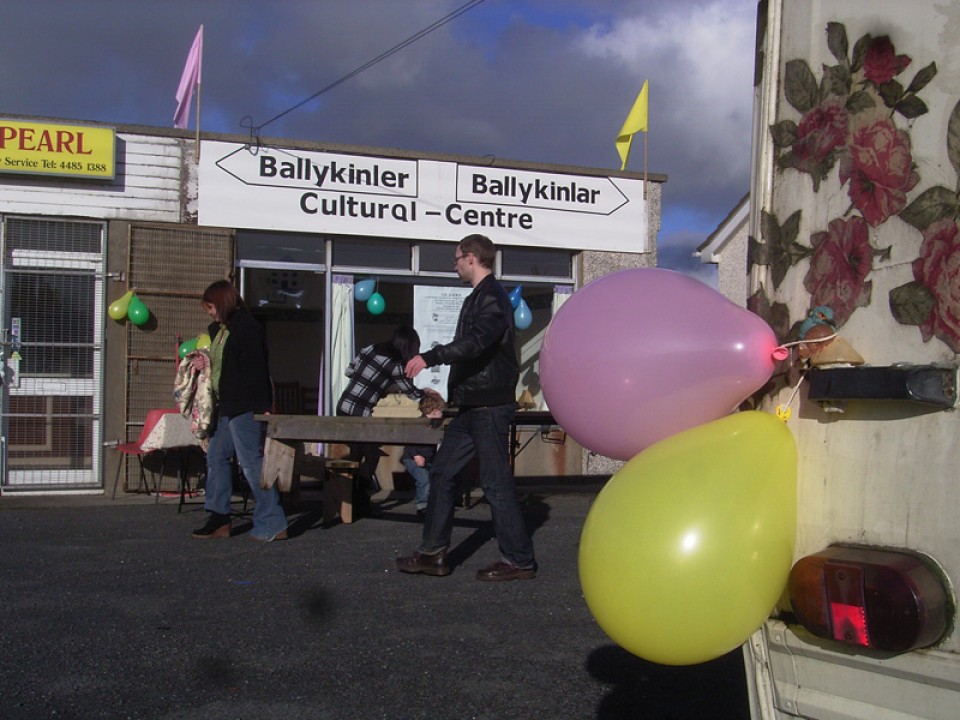
UP- Down. 4 community art workshops + 1 Village Fair
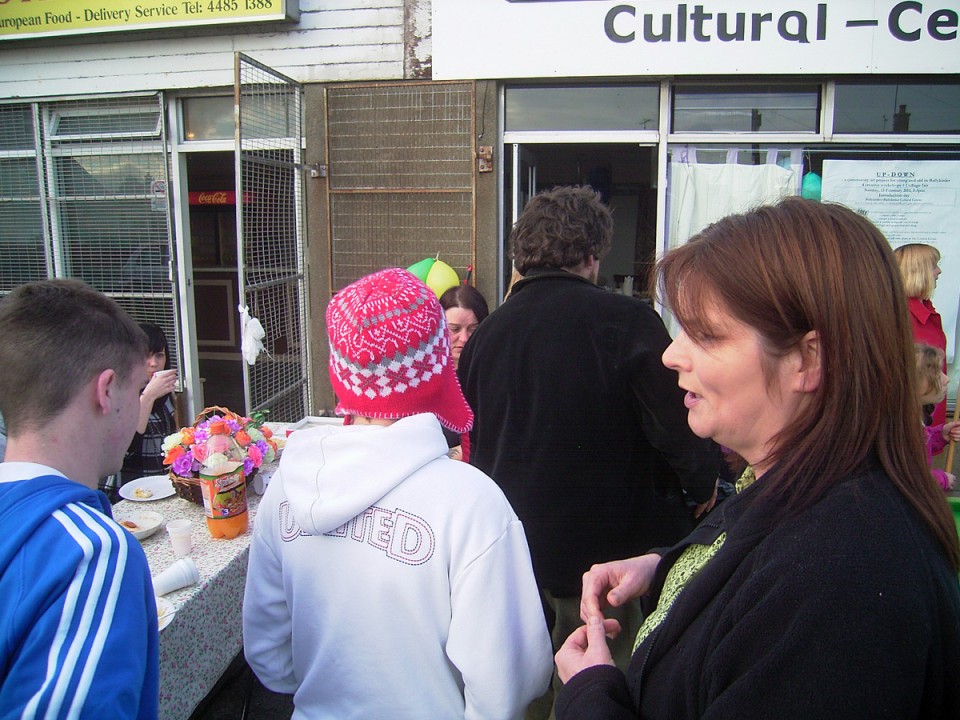
UP- Down. 4 community art workshops + 1 Village Fair
Connections
With ‘UP- Down’, PS² is testing ideas and insights into rural cultural
projects in the village of Ballykinler. There are as yet not many
examples of rural arts initiatives in Northern Ireland and the cultural
imbalance between urban centers and rural regions is significant. The
interest and need for ‘culture’ in a village like Ballykinler is great,
occasional drama classes, craft courses etc. are well attended. They
happen however only sporadically, isolated and offer no continuity.
‘Ballykinlar and Tyrella Cross-Community Association’ and especially
artist, activist and local resident Anne-Marie Dillon have worked hard
to bring cultural activities and art on a regular basis into the
village. Their struggle to establish a community (arts) centre, has led
to imaginative, temporary projects, often located in the open or in
mobile spaces.
What distinguishes activities like the weekly held ‘community coffee
mornings’ in a converted caravan from traditional community arts work,
is the explicit use and declared intention as an art project, carefully
staged like a happening, with social interaction and as a rural
intervention.
For PS², UP-Down is an exciting and new shift from a city orientated
curatorial practice to a non-urban, rural environment. For the community
of Ballykinler it is a chance to highlight their creative potential and
community spirit and to develop a local cultural process of change and
activism.
1.Film production/ documentation
Lead artist: Phil Hession
2. Local souvenir
Lead artist: public works
3. Limousine cycle
Lead artist: Paddy Bloomer
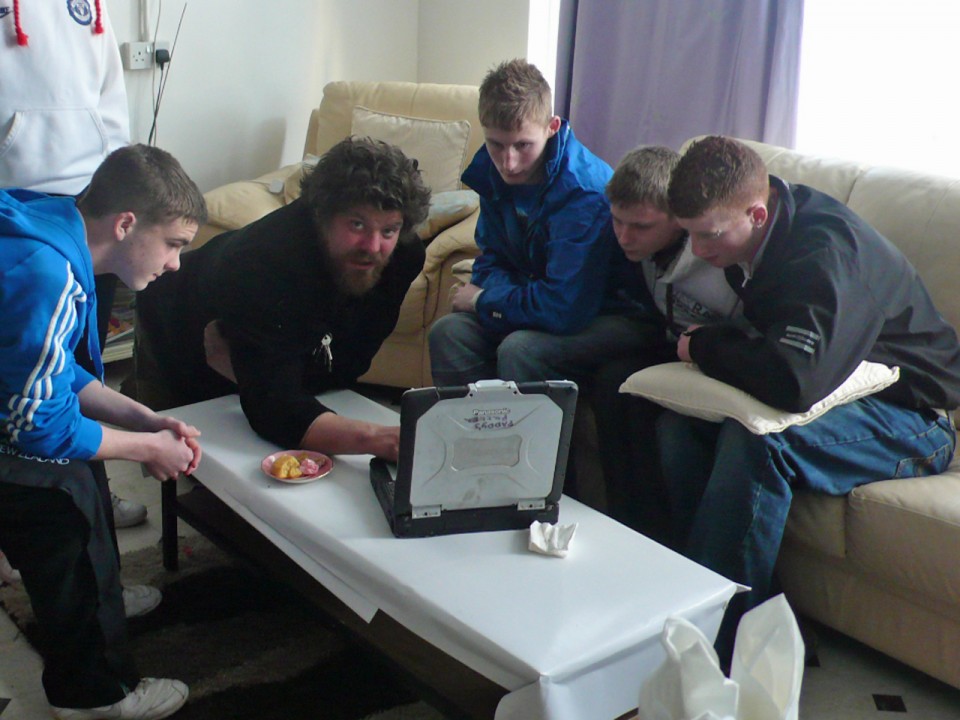
Paddy Bloomer- scrap metal design session
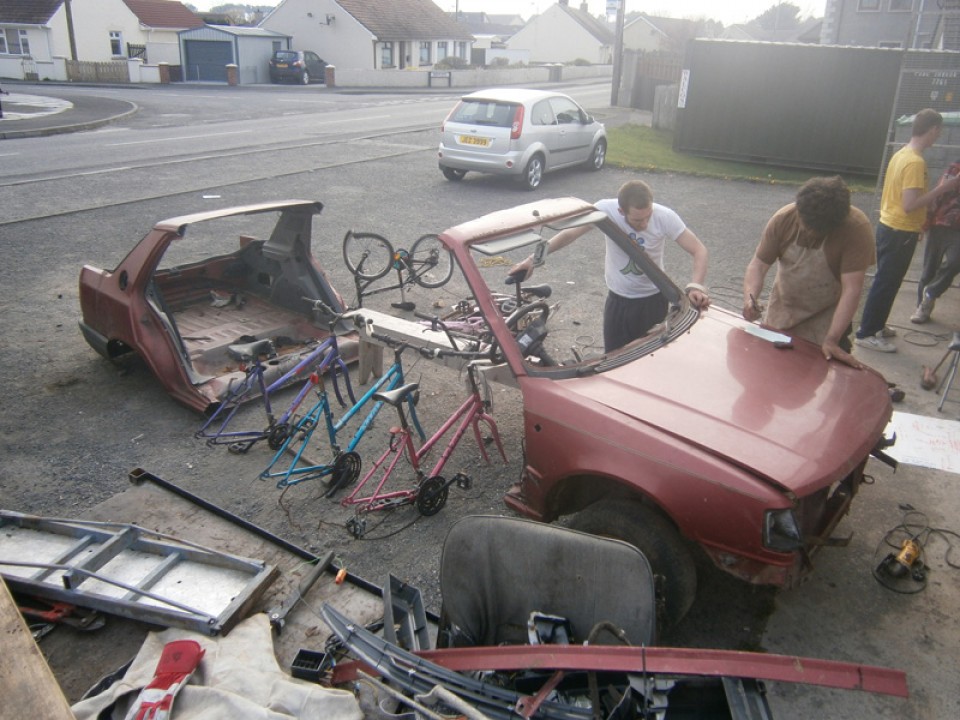
Paddy Bloomer, scrap metal workshop
4. Village Newspaper
Lead artist: Duncan Ross
Dear Reader (Published in Ballykinler Village News)
This village newspaper is the result of workshops involving young people from Ballykinler. Over eight weeks from March to May 2011, they produced this first issue together with artist and illustrator Duncan Ross. Every week they looked at different aspects of journalism: Do we know our area and the people who live here? Who would we like to interview and what questions do we ask? From interviewing- , recording techniques to editing, from word processing to layout, team working and deadlines- they have learnt a lot. Contributing to the success with their nosiness, enthusiasm and drive for the unusual. This is hopefully just the first edition of a village newspaper, of news, images and interviews from Ballykinler and its surrounding area.
The newspaper group was part of UP- Down, 4 community art workshops + 1 Village Fair in Ballykinler. It was initiated by PS² and Anne-Marie Dillon and
John- hold on, Peter, isn’t it, can you stop here please.
Peter- Who are you?
John- You should know us. We did the interview with Canon Sharkey.
Peter- Ah, yes of course.
Mother- Welcome to Ballykinlar, Peter.
Gareth- Hi.
Peter- How did you all get here?
John- Call it magic.
Mother- The ideato appear in your text here comes from the two boys. You know, they need another interview, don’t you John. I hope you don’t mind?
Peter- No, no. Just surprised.I like your interview with Canon Sharkey by the way, really good, it reads more like a theatre play with…
John- We don’t have much space for your text here. We’d better start here.
Peter- If I am married?
Mother- That was a good question to start with Canon Sharkey, wasn’t it?
John- Who cares.
Gareth- First question: Why do you come to Ballykinler?
Peter- You mean for this UP-Down project? PS² normally works in Belfast and runs projects connected to urban issues, but since some years we are very interested in the subject of cultural production in a rural environment. We recently were part in a research project called RHYZOM, where we- PS² - and a group of
Mother- Don’t you have a play station 2 box John? I know Peter yours is different.
Peter- Just let me continue, we organized a workshop last summer here with artists and architects and cultural activists from this European network.
John- I know, June 2010: ‘How to bridge the gap between cultural/ art projects and the public?’ You forgot the question mark on your website.
Peter- How do you know that?
John- I come prepared, didn’t you just write how much we learnt as journalists?
Gareth- Do you think we need your art?
Peter- What do you mean? I don’t come with art. We asked some artists if they would like to work with some people here in your village to make something together. Something creative, like the limousine cycle which Paddy Bloomer and his workshop pieced together from scrap. Or the planting pot souvenir which public works developed together with the Forever Young Pensioners. A potting caravan as a local souvenir, well more than local, their product will be part of the International Village shop.
John- Or this newspaper.
Peter- Yes, Duncan Ross worked his socks off with you.
John- Do you want us to add the web links to all those names later?
Mother- When I was a school girl, even your age John, we learnt how to embroider. Kept our neat little sample books with all the different stitches. Coloured threads, just like a butterfly collection pressed between the pages. So beautiful, really. I’d call this art, just beautiful. I know it isn’t, art I mean.
Peter- That’s it.
Mother- I didn’t mean to annoy you with my needlework, it was just, I remembered this feeling to make something nice and to be proud of.
Peter- No, I mean that is exactly what these workshops were about; to be creative and to put time into something which seems useless at the beginning but then becomes really good. You all have some skills, you are good at computers John and you are good at listening. Mother is good in crafts, the embroidery, or gardening. Some of the pensioners make these gift baskets. They look like sculptures. So good, you wouldn’t like to open them. And have you seen the lawnmower bikes? When Anne- Marie Dillon first showed me around in Ballykinler, I saw them working on one.
Mother- Oh, but that’s illegal, isn’t it. And dangerous, so dangerous. Mind you, we once built a trailer out of leftover stuff we found in the yard and, I mean we were small. It was good fun, so it was.
Peter- But that gave us the idea to run a workshop for a mobile construction out of scrap metal. Paddy is…
Gareth- Paddy Bloomer the blooming inventor.
Peter- Him, yes, he is into pedal power. They took the engine out of the car and put bicycles in.
Gareth - It’s slow as a slug now, have you seen it, and it took them for ages, really long. I saw them, fifteen with goggles and gloves and so, like mechanics, thought they were crazy.
Mother- What about the other ones, the other workshops. I saw the poster back in, well it must have been before Christmas?
Peter- Yes, that’s when we started to inform people. The ‘Forever Young Pensioners’.
Gareth- Do they have a website, you know, we need to mention that at the bottom of the text?
Peter- No, not yet, but much is written about them. So, the Forever Youngsters, they are such a force. They worked with Andreas Lang and Kathrin Boehm from public works in London, they do have a website, Gareth.
Mother- From London, that’s pretty special, from so far away to Ballykinler. Why would you go away from London, that’s where all the big museums are and the Olympics next year. Why would you want to go to Ballykinler and do, what did they do?
Peter- They worked with the Pensioners. To develop a local souvenir, something which represents and embodies them and the village.
Mother- Like the Eiffel Tower for Paris?
Peter- Nearly. They had a shelf in the Cultural Centre and brought in objects occasionally they thought were important for them, something they made, Annie’s calendar with photographs from the villagers; or ceramic jewellery. Ah, actually they had a tower as well, bit smaller than the Eiffel tower, the one from Cushendall, Sarah made it. They all went on holiday there last year with the caravan and stayed in the tower there.
Gareth- That must have been really good in that old tower, it’s a ruin isn’t it?
Peter- What they finally decided was that they wanted their caravan, their ‘Mobile Community Centre’ as a plant pot. Rose Garden they call it, with all its decoration.
It holds plants and their memories, how they started as a group and Anne-Marie decorating it with roses. The pot is just being cast in England and burnt there, 50 little caravans, all for sale.
Mother- I’m sure it will sell. Didn’t they meet on the street, just cross from the chippy? It looked, you know when I saw them the first time one morning, I thought, what the heck is going on here. All those sofas and tables, and china on it, toys, tea, just open air living room, like those sit ins, you know. I don’t want to be rude, but that was hilarious when I saw that, like a street protest. And they are pensioners, you know, and they seemed to like it.
John- It was like a protest then? A riot?
Peter- Yip, a creative one, but they had a good time at their regular coffee mornings. Ann-Marie then got the caravan and that was a step better towards a Community Centre. The BBC even came down to interview them.
Mother- I remember, the talk back programme that was on Radio Ulster. They are the same ones then?
Peter- That was in 2009 and now they have the Cultural Centre in Commons Road, just across the place they had the coffee mornings.
John- And their gardening pot now, in the shape of their caravan is the souvenir with all this story behind it? I see. Didn’t think of that, it’s quite good, it’s really something if you think about it.
Mother- You wouldn’t think that just by sitting outside on sofas and so would make such a difference. It’s so simple.
Peter- There is an article Doina Petrescu wrote ‘How to make a community as well as the space for it’ or Ruth Morrow’s text about a street-level pedagogy of creativity in the…
John- We don’t have so much space in our paper. What else was part of the UP-Down workshops: scrap mobile, souvenir, us and?
Peter- A film workshop. But let me finish, you have these cultural activities or the desire to do something but not a space to work in or to meet and communicate, just your home. The public coffee mornings started a process of change here and these meetings were real but as Anne-Marie says, they are art too. In fact she says it the other way around about all her art practice: it’s art but it’s real.
John- You mean it’s not stuck in a museum but it also works in real life?
Peter- Like the caravan pot, yes. It is a craft object, you can use it practically and it carries this story.
John- The film then.
Peter- That was the workshop with Phil Hession. That was planned like the other ones, that the group develops an idea to film their lifes in the village, like a video portrait, their friends, what they do, their boredom, what excites them and so. It turned out differently, they acted more, they said come and play poker with us and you can film that. So Phil documented some activities done collectively. And the film will be showed in the ‘Monza Plex 3000’ community cinema.
John- The black caravan?
Peter- Yes. The youngster refurbished it over, well over more than a year now. Bit by bit. They bought these old car seats, put in a new floor, walls, everything. Hard work. Anne-Marie was behind it like mad.
John- We should have interviewed her then, she seems to run everything.
Peter- She does and the pensioners and others. Everybody does their share, you saw that during the workshops. PS² just provided the framework for this UP-Down project. I think Ballykinler is such an interesting place, small but condensed, a microcosm of the political legacy in the North.
John- Of what?
Peter- And of creative ways to stimulate and indicate change, with art, with activism, a street movement and a very fragile process. The BUS STOP project for example…
John- Thank you Peter, but won’t have space for more.
Mother- One last question from me, Peter, the village fair. Now if I understand you right, no I say it this way, would you then say the fair is a normal fair but also a piece of art, kind of , actually like a form of new museum and we are all part in it?
Gareth- Wow.
Peter- Yes, you can put it that way.
John- That’s it then. We have enough text, really, it’s so much work to edit that. Never knew that this creativity thing is such hard work. Can’t wait to see that printed.
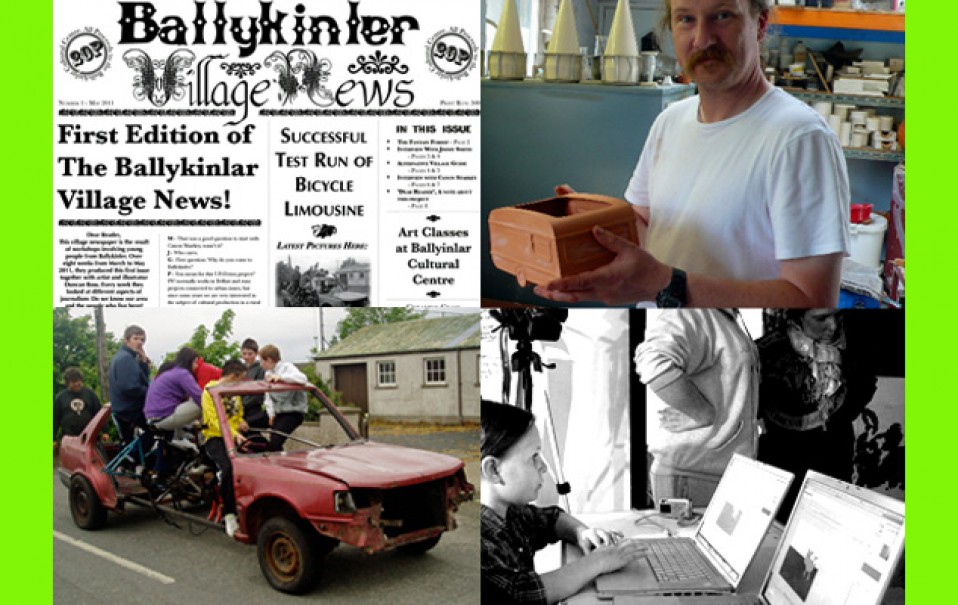
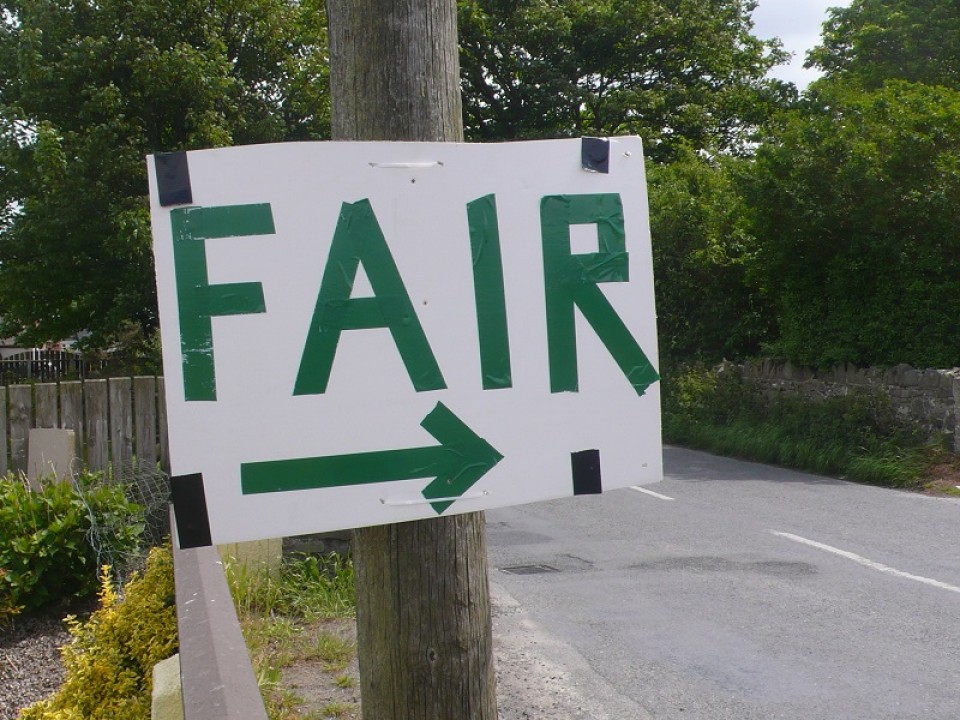
+ Ballykinler//Ballykinlar Village Fair
Saturday, 28 May, 1- 4pm
Cultural Centre, Commons Road and GAA football pitch.
With local craft and food stalls, kids fun, tombola, car boot sale, music, cinema, art and more.

